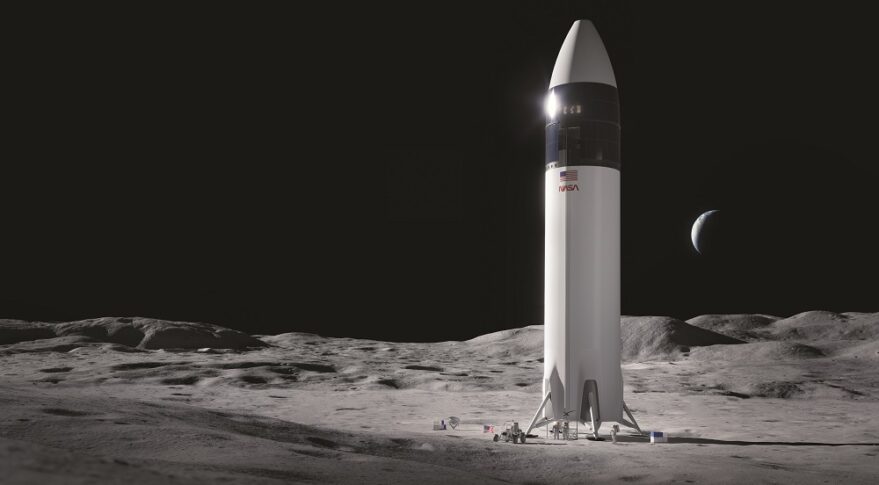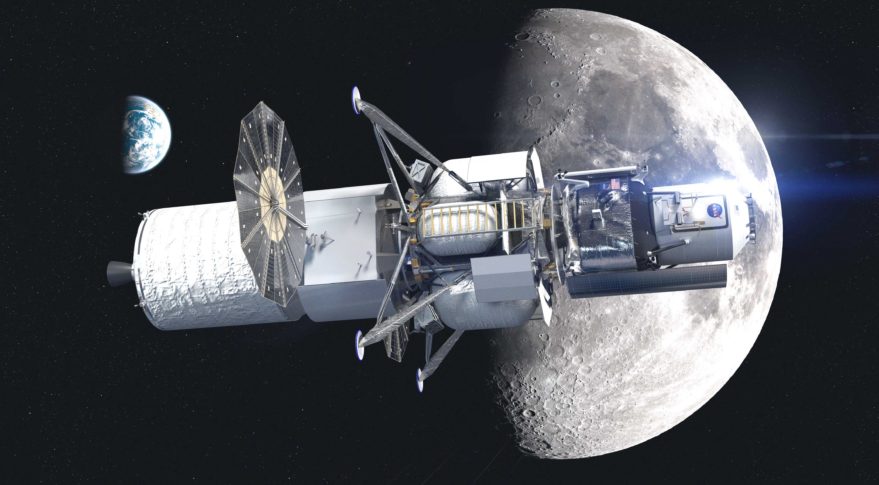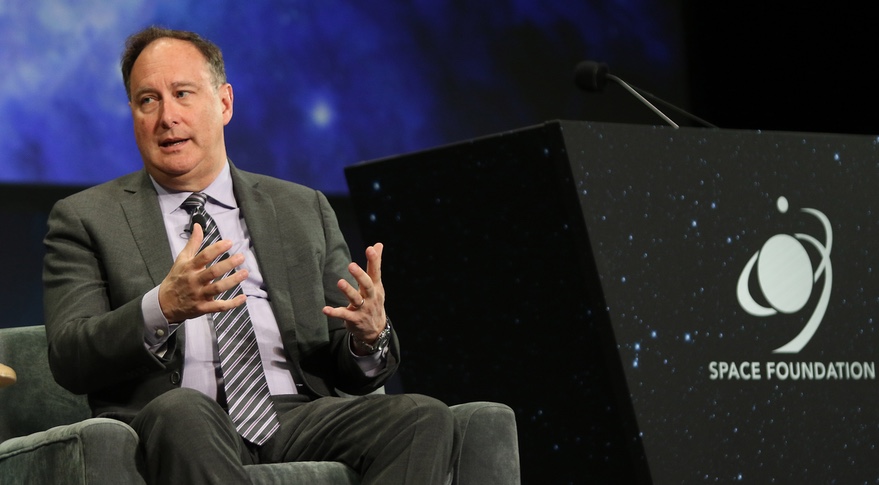NASA to support development of second Artemis lunar landerby Jeff Foust — March 23, 2022 [SN]
 NASA will select a second company to develop a crewed lunar lander alongside the existing Human Landing System award for SpaceX's Starship. Credit: SpaceX
NASA will select a second company to develop a crewed lunar lander alongside the existing Human Landing System award for SpaceX's Starship. Credit: SpaceXWASHINGTON — NASA announced March 23 that it will support development of a second lander to transport astronauts to and from the lunar surface to provide competition with SpaceX for the later “sustainable” phase of the Artemis program.
The agency said it will soon kick off a competition for what it calls Sustaining Lunar Development, which will back work on a second lander separate from the existing Human Landing System (HLS) award made to SpaceX in April 2021. The award will include both an uncrewed demonstration landing and a crewed landing, much like SpaceX’s HLS Option A contract.
https://spacenews.com/nasa-to-support-development-of-second-artemis-lunar-lander/Northrop Grumman weighing options for new Artemis lunar lander competitionby Jeff Foust — March 31, 2022 [SN]
 Northrop Grumman's role in the Blue Origin-led "National Team" was to provide the transfer element (left) of its proposal lunar lander, but the company says it's weighing the option of leading its own bid for a new NASA lander competition. Credit: Blue Origin
Northrop Grumman's role in the Blue Origin-led "National Team" was to provide the transfer element (left) of its proposal lunar lander, but the company says it's weighing the option of leading its own bid for a new NASA lander competition. Credit: Blue OriginWASHINGTON — Northrop Grumman says it’s still considering whether to rejoin a Blue Origin-led team for a second Artemis lunar lander competition or to go on its own.
In a media briefing March 30 about the company’s overall contributions to the Artemis program, executives said they were “encouraged and excited” about NASA’s plans to procure a second lander through the new Sustaining Lunar Development effort announced March 23. That lander will join the one being developed by SpaceX and based on its Starship vehicle through Option A of the Human Landing System (HLS) program.
https://spacenews.com/northrop-grumman-weighing-options-for-new-artemis-lunar-lander-competition/Artemis lunar lander contenders revisit team rosters for round twoby Jeff Foust — April 7, 2022 [SN]
 Robert Lightfoot, executive vice president of Lockheed Martin Space, said his company is using this week's Space Symposium to meet with prospective partners for a NASA lunar lander competition. Credit: Tom Kimmell Photography
Robert Lightfoot, executive vice president of Lockheed Martin Space, said his company is using this week's Space Symposium to meet with prospective partners for a NASA lunar lander competition. Credit: Tom Kimmell PhotographyCOLORADO SPRINGS — Companies interested in a NASA competition for a second Artemis lunar lander are using this week’s 37th Space Symposium to find partners that may result in different teams than the earlier lander competition.
NASA released a draft version of the request for proposals (RFP) for its Sustaining Lunar Development project March 30. That will fund development of a second lunar lander, alongside SpaceX’s Starship, to take astronauts to and from the lunar surface for the later “sustainable” phase of the Artemis program.
https://spacenews.com/artemis-lunar-lander-contenders-revisit-team-rosters-for-round-two/Wniosek zaproponowany przez senatora Berniego Sandersa, aby NASA nie mogła wspierać co najmniej dwóch firm zdolnych do opracowania HLS przepadł w głosowaniu senatorskim. Blue Origin zatem może nadal ubiegać się o udział w programie HLS.[posty aktualizowane]
Senate rejects effort to strip NASA lunar lander provision from authorization billby Jeff Foust — May 5, 2022 [SN]
 Sen. Bernie Sanders (I-Vt.) called language authorizing $10 billion over five years to develop at least two lunar landers a handout to Jeff Bezos, founder of Blue Origin. Credit: C-SPAN
Sen. Bernie Sanders (I-Vt.) called language authorizing $10 billion over five years to develop at least two lunar landers a handout to Jeff Bezos, founder of Blue Origin. Credit: C-SPANWASHINGTON — Senators overwhelmingly voted against a motion May 4 that would have dealt a setback in NASA’s efforts to select a second company to develop an Artemis lunar lander.
The motion, sponsored by Sen. Bernie Sanders (I-Vt.), would have instructed senators participating on a conference committee with the House on the United States Innovation and Competition Act (USICA) to remove a section authorizing funding for the Human Landing System (HLS) program and directing NASA to support at least two companies.
https://spacenews.com/senate-rejects-effort-to-strip-nasa-lunar-lander-provision-from-authorization-bill/